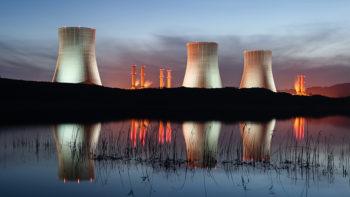Researcher Developing Novel System For Nuclear Waste Repositories

Nuclear power plants have supplied about 20% of the United States’ annual electricity generation since 1990, according to the U.S. Energy Information Administration. But that energy creates high-level radioactive waste that has to be stored.
Yong-Rak Kim, professor in the Zachry Department of Civil and Environmental Engineering at Texas A&M University, has been awarded a U.S. Department of Energy Nuclear Energy University Program grant to develop a novel system in engineered barriers to permanently isolate and contain nuclear fuel waste. Kim is collaborating with researchers from Sandia National Laboratories and the University of Nebraska-Lincoln.
“We need to find a way to store nuclear fuel waste for a long time in a very safe manner. This is a huge challenge for many countries where nuclear power plants have been operated,” Kim said. “We need to find a better material that is less permeable and more resistant to cracking and chemical degradation than conventional materials in challenging geological environments.”
All of the nuclear waste that a power plant generates in its entire lifetime is currently stored on-site in dry casks, which is a temporary solution for nuclear waste disposal.
“The fundamental understanding and resulting novel material will vastly improve nuclear waste management and support the enhanced safety and security of nuclear-generated electricity in the United States,” Kim said.
The new engineered barrier material reinforced by inorganic microfibers will significantly reduce the threat from the long-term disposal of spent nuclear fuel. This will enable sustainable nuclear energy cycles in the United States.
“We are very excited to be working on this project,” Kim said. “The impact is huge as we can better engineer the nation’s nuclear waste management more safely for the next several centuries. It is also a great opportunity to work with the Department of Energy National Laboratories and Technology Centers.”
This article by Alyson Chapman originally appeared on the College of Engineering website.





